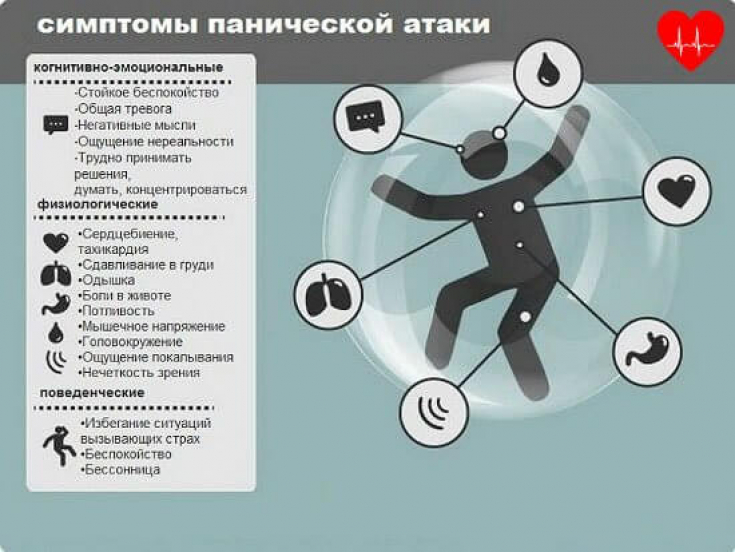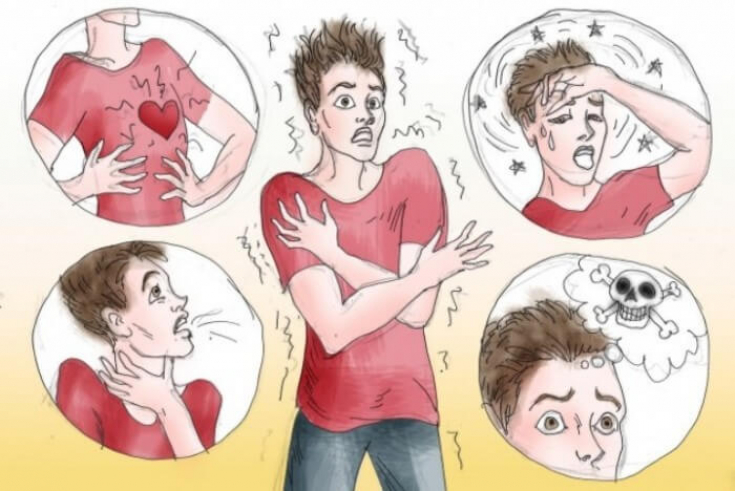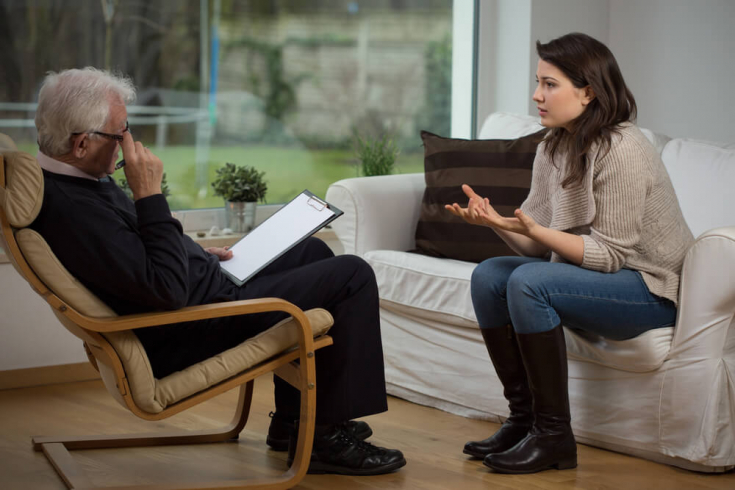Panic Attack — an inexplicable attack of anxiety, which is accompanied by unreasonable fear and various somatic symptoms, such as: rapid heartbeat, high blood pressure, lack of air. Such a state is regularly experienced by a fairly high percentage of the world's population throughout the year. Panic attacks can happen to anyone.
The editors of estet-portal decided to study in detail the causes of a panic attack, possible options for its manifestation, as well as methods for solving the problem.
- Who can experience panic attacks
- What are the causes of panic attacks
- What are the symptoms of a panic attack
- How to deal with a panic attack
Who can experience panic attacks
Panic attacks are completely unexpected anxiety attacks and fear that come on suddenly. They can last for a few minutes or for a long time.
More useful information on our page in Instagram!

As we have indicated earlier, panic attacks can happen to absolutely anyone. But there are certain people who are at risk. Anxiety attacks should be feared by residents of large cities. Since these people are often in constant tension and stress, they are more likely to have a panic attack. Also in the risk category are hyper emotional people, social phobes or people with anxiety disorders.
What are the causes of panic attacks
Panic attacks occur for individual reasons. But there are certain factors that influence the appearance of the disorder. For example, prolonged stress combined with lack of sleep, fatigue and anxiety. Also, the fear of powerlessness, the fear of the impossibility of controlling the situation. The loss of a loved one or parting, which is accompanied by strong feelings. These factors include the expectation of some important event that makes you worry. Fear of open spaces or agoraphobia — Roughly speaking, the fear of being anywhere but at home can also be one of the causes of panic attacks.

One of the named factors cannot cause attacks, but when all the stresses, worries, worries and fears accumulate, they can develop into
— main symptoms of a panic attack. But do not rush to diagnose yourself.
How to stop being nervous: 10 secret ways

If these main symptoms appear in combination with four or more symptoms from the list below, only then the anxiety can turn out to be a panic attack:
- Dizziness, fainting;
- increased heart rate;
- internal trembling;
- sweating;
- shortness of breath;
- nausea;
- numbness or tingling in the limbs;
- confusion of thoughts;
- fear of death;
- fear of losing control of oneself;
-
high blood pressure.
How to deal with a panic attack
1. Lean on any hard surface. You need support to control your body.
2. Normalize your breathing. Broken short breathing should be transferred to controlled by you. Breathe under the count: four counts inhale, four — exhale.
3. When you have completed the previous tasks, look around. Try to concentrate on the elements you see, count the people. Listen to the sounds, smell the smells. Just take your time.
4. It often becomes stuffy during panic attacks. Drink water if possible.
5. Concentrate all your attention on calmness.
Psychosomatic illnesses: how our thinking affects the body

if they occur frequently and last for a long time, require immediate consultation with a neurologist. A competent specialist will determine the extent of the problem and prescribe the necessary medicines. Also, you should work with a psychotherapist. It will help you find the true cause of anxiety attacks, deal with the manifestation itself and change your attitude towards attacks.
What you should not forget
— panic attacks — not eternal. This is not a lifelong diagnosis, but a successfully treatable temporary disorder. If you are experiencing obsessive anxiety, contact a neurologist and a psychotherapist.
More important and useful information on our YouTube channel:





